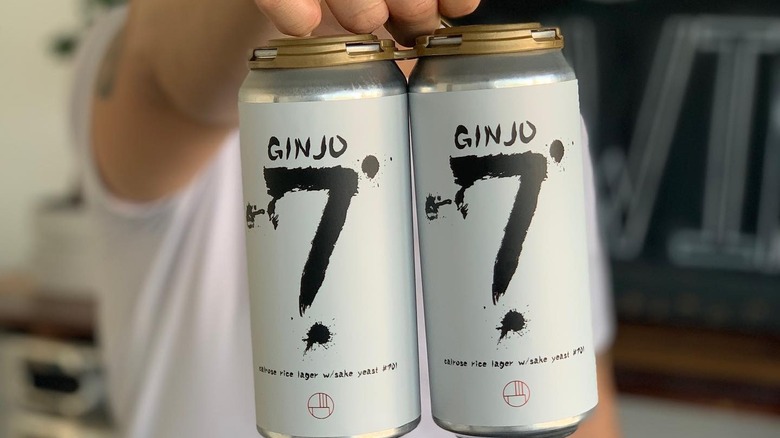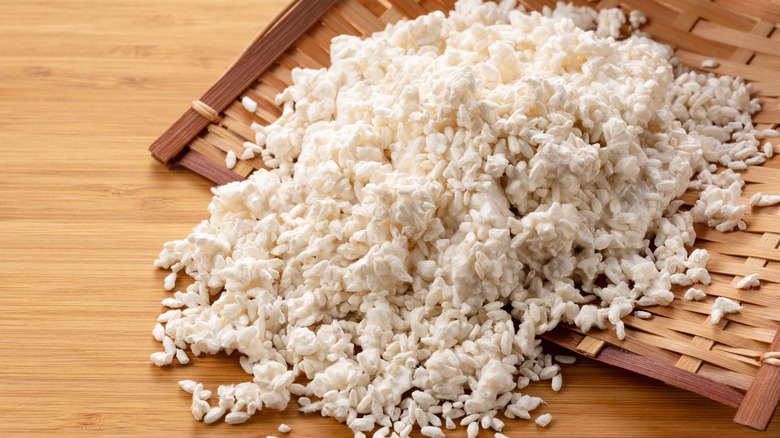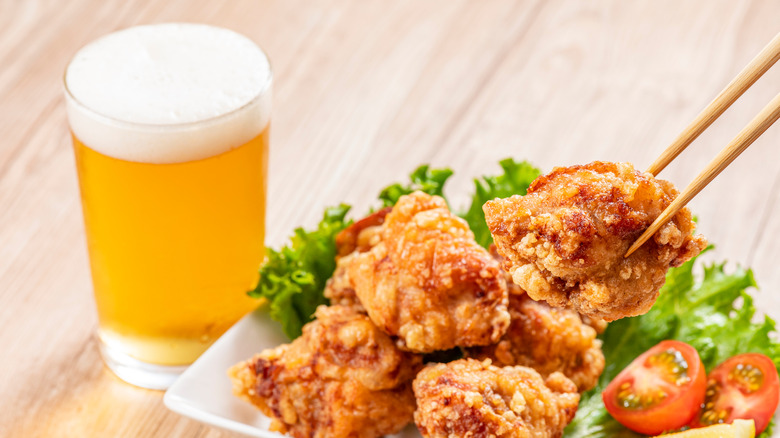What Makes Ginjo Beer Unique?
If you can't decide between beer and sake with your sushi, you might be able to have both. (And no, we aren't talking about a sake bomb.) Ginjo beer, also known as sake-yeast beer is a funky hybrid that draws on the flavors and brewing traditions of both beer and sake to create something completely new. It has floral, fruity, and sometimes umami notes of sake, making it unlike other beers. It's a relative newcomer to the beer scene, though the ginjo sake that inspired it is only about 50 years older.
To truly appreciate ginjo beer, it's also important to understand sake. On a basic level, sake is a fermented alcoholic drink made from rice that's been polished to remove impurities. There are two main styles — junmai (which is listed as prefix on the label and means pure rice sake), and non-junmai, where brewer's alcohol is added to refine flavor. The level of rice polishing, also known as seimaibuai can be divided into three categories based on the amount of rice left after polishing — 50% is daiginjo, 60% is our familiar ginjo, and 70% is honjozo. Generally, more polishing will yield more delicate, fruity notes, and less polishing will mean a more earthy and full-bodied final product.
Ginjo (and ginjo beer) brewing is all about balance
Since ginjo beer is highly influenced by sake, it's helpful to know what's in sake and how it's brewed. Aside from polished rice, sake's other ingredients include water and specific types of fungus and yeast. The fungus (also known as koji) comes from the species Aspergillus oryzae and is also used to make soy sauce, miso, and rice wine, also known as mirin. Sake yeast is from the species Saccharomyces cerevisiae, which was first isolated in Japan and has a variety of strains.
Sake brewing starts with polishing rice before washing, soaking, steaming, and cooling it. Then, koji and yeast are added, and the mixture is dumped into a large vessel to ferment. S. cerevisiae prefers cold temperatures (41-55 degrees Fahrenheit compared to the 50-85 degrees Fahrenheit that beer yeast likes), so fermentation happens low and slow. After fermentation, the mixture is pressed, filtered, pasteurized, aged, and pasteurized again.
According to the Brewer's Association, ginjo beers are brewed with sake yeast or koji, with a balance of the distinctive flavors produced by the byproducts of sake yeast (S. cerevisiae) or koji fermentation that you'd find in sake. Although these beers almost always contain rice, they can also include other ingredients and can have a slightly different brewing process, although many use low and long fermentation methods like sake. One example is Ginjo 7 produced by Nova Brewing Co, which is made with steamed rice, pilsner grain, and sake yeast.
Unique flavors in ginjo beer create inventive food pairings
The flavors of ginjo beer come from the delicateness of polished rice and the magic of fermentation. Because ginjo contains moderately polished rice, you can expect it to balance a wider range of flavors, from fruity to earthy. You may also get different flavor notes from additional beer-making ingredients and differences in brewing techniques. By definition, beers in this category can have a variety of colors and mouthfeels, but will generally be highly carbonated and low to medium levels of malt, hops, and bitterness. The alcohol content of ginjo beer can also vary widely from 4.30 to 10.20% ABV, so take a look at your label to see what you're getting yourself into before throwing one back.
Ginjo beer is enjoyable to sip on its own, but thanks to its unique flavor profile, it also pairs well with a variety of foods. Japanese classics like sushi, sashimi, steamed edamame, or ramen are naturally harmonious with this drink. Additionally, ginjo beer can highlight the mild sweetness of an array of seafood dishes like seared scallops, fried shrimp, savory baked salmon, or luxurious grilled lobster tails. It can even complement an expertly planned charcuterie board, Korean fried chicken, or a spicy curry dish, proving it's a versatile drink with plenty of depth.


